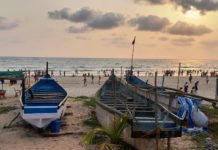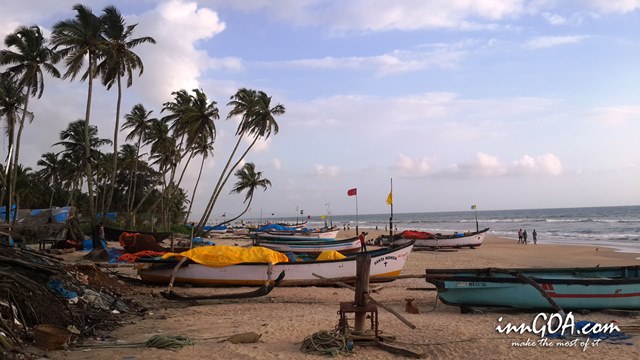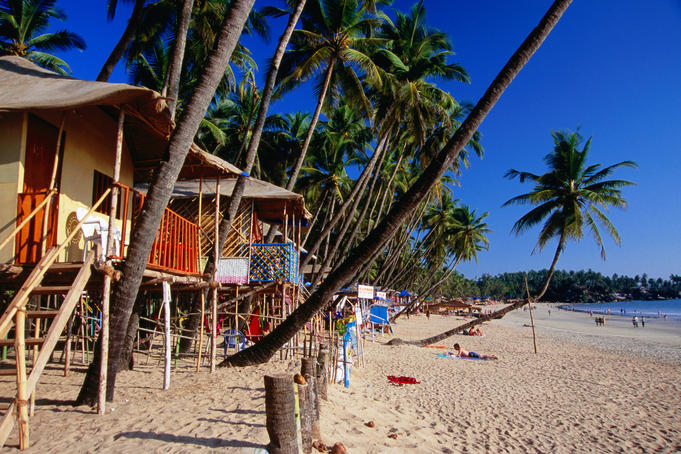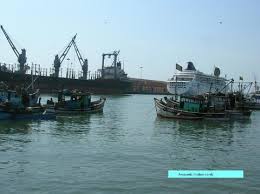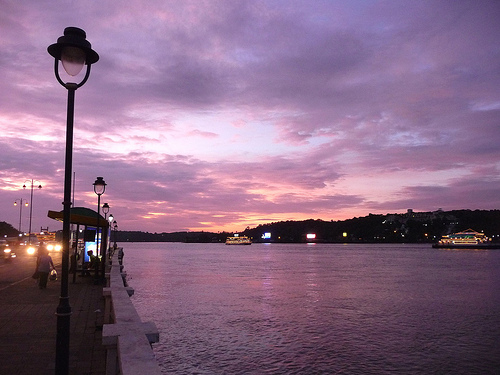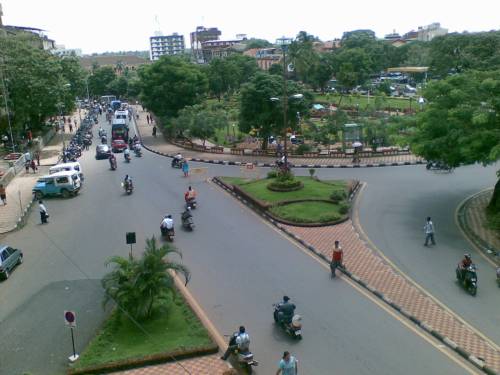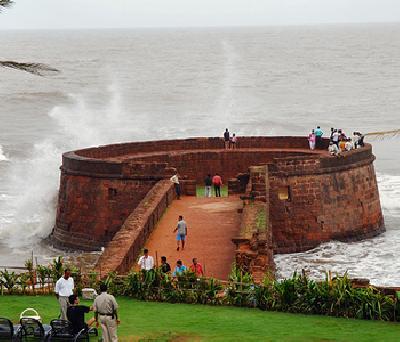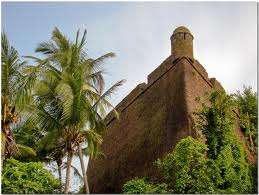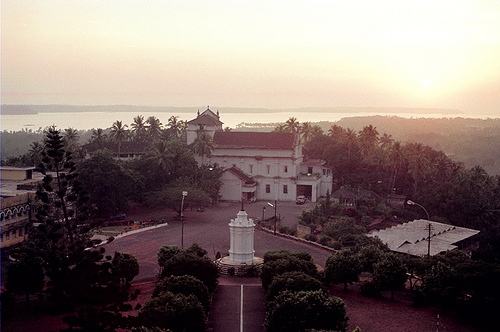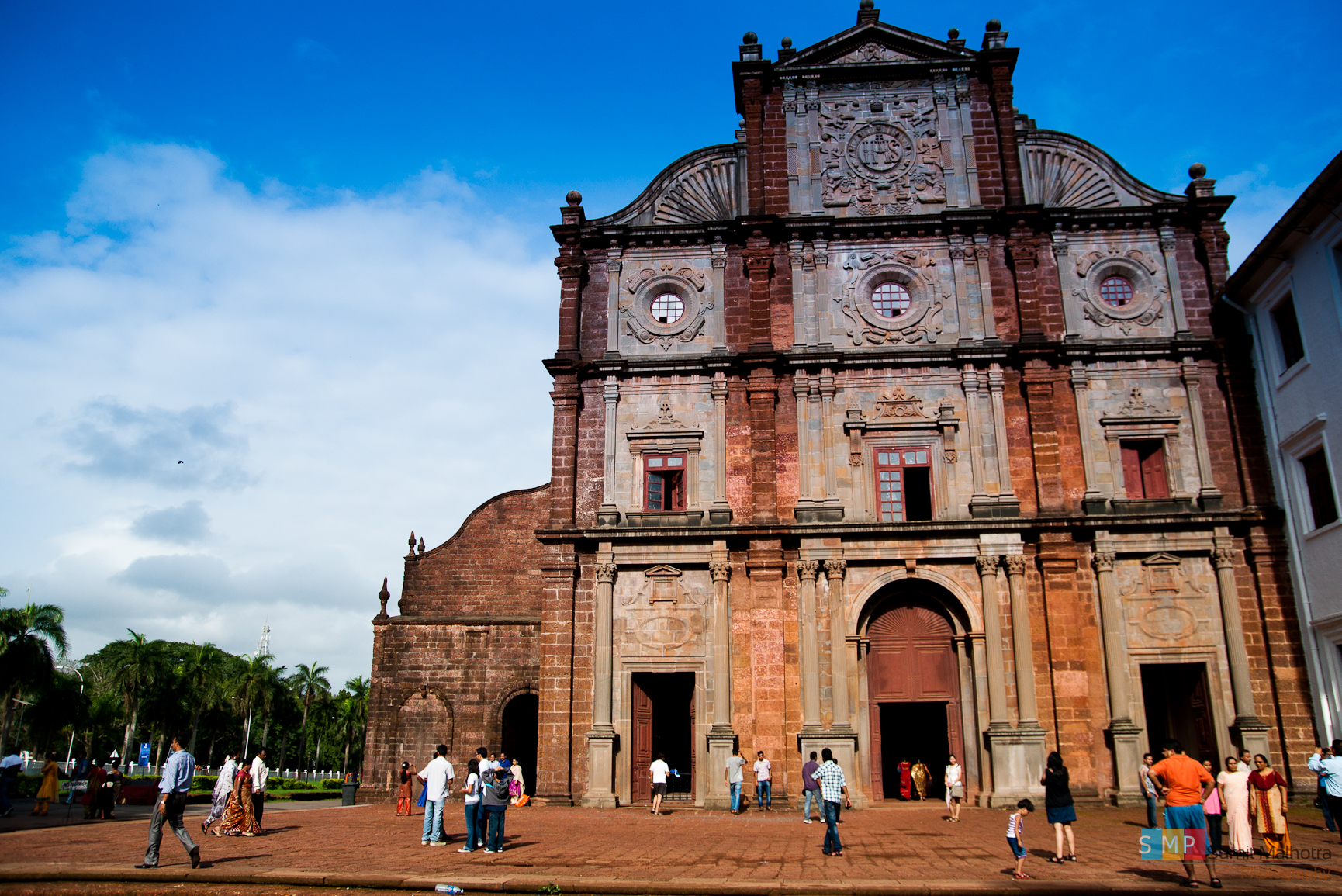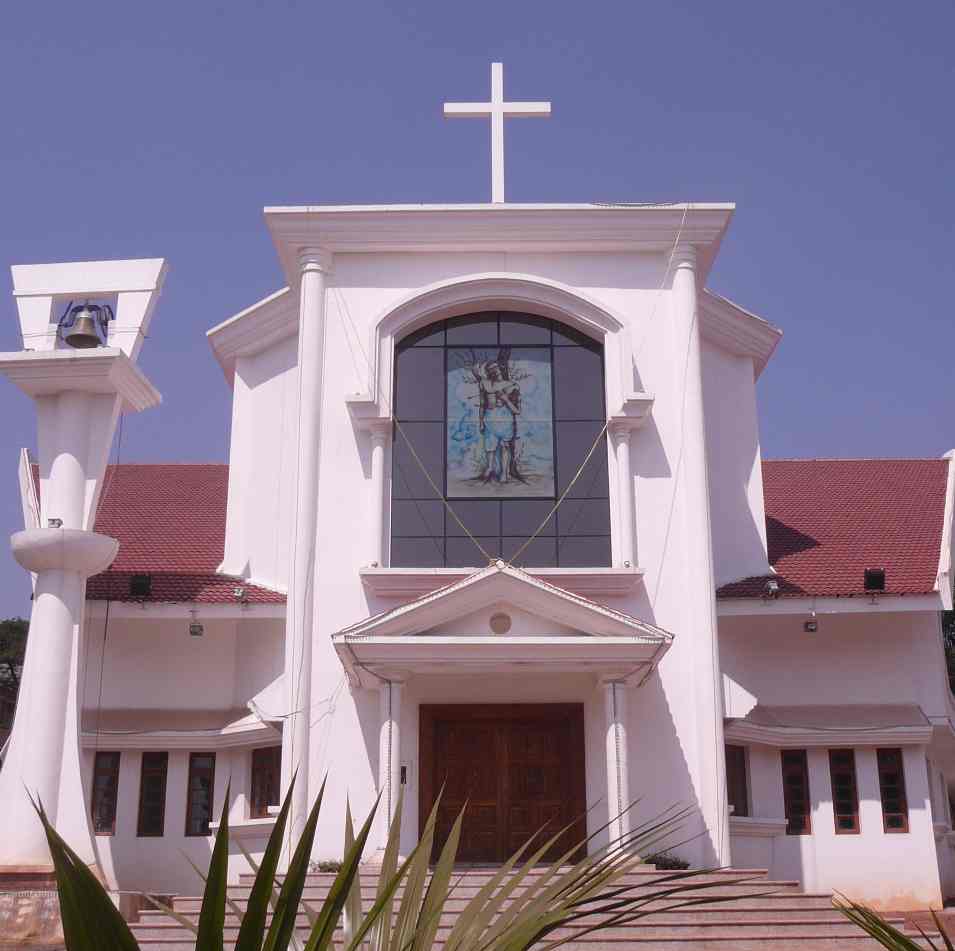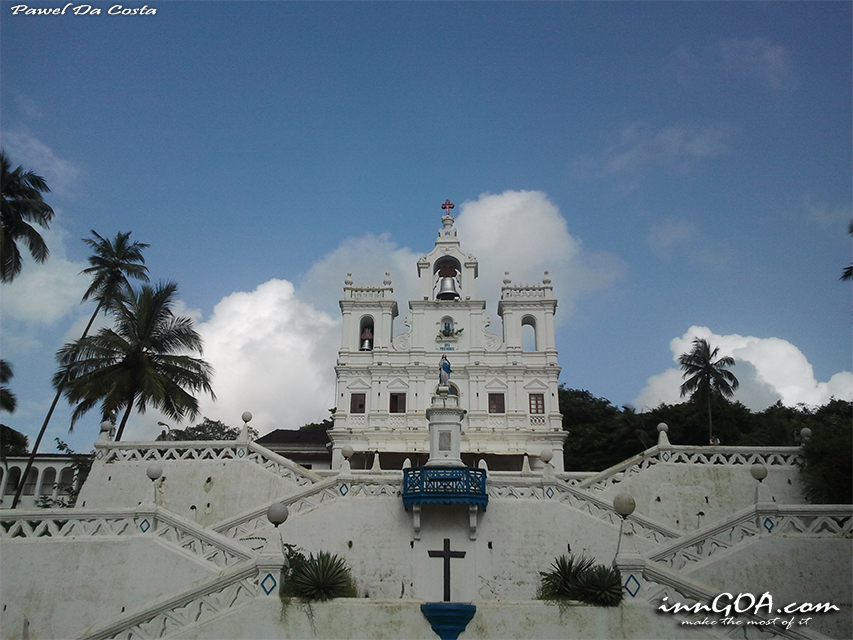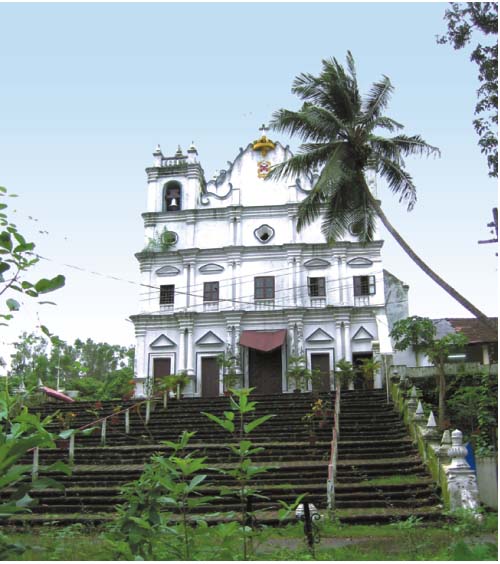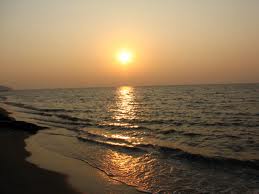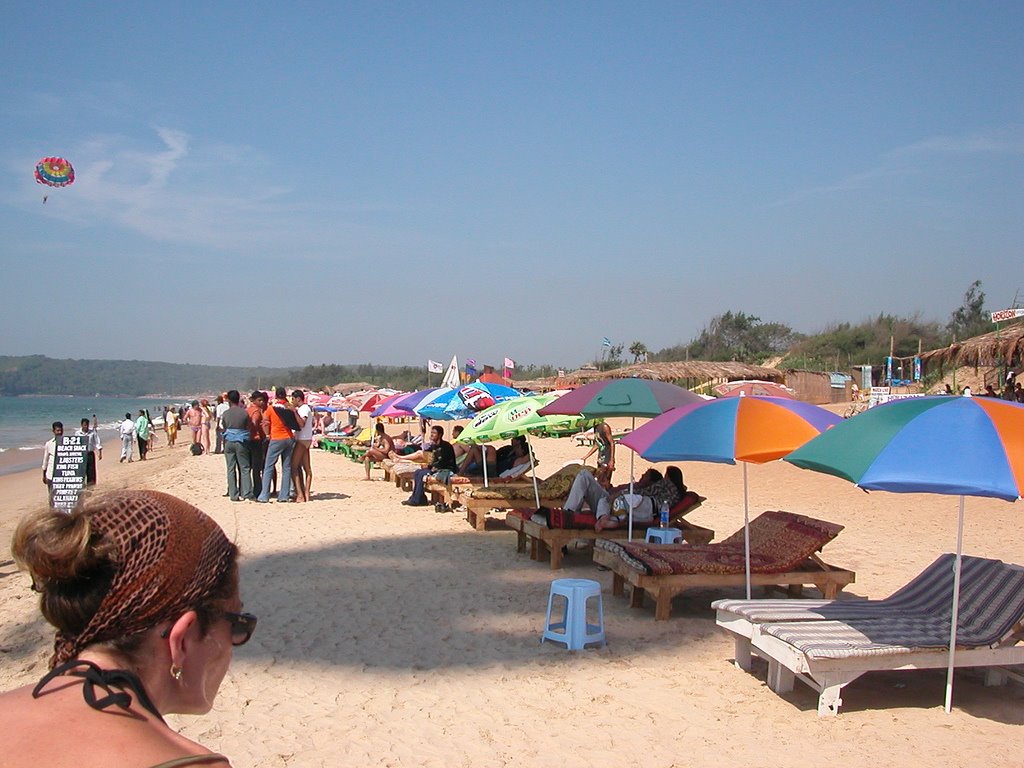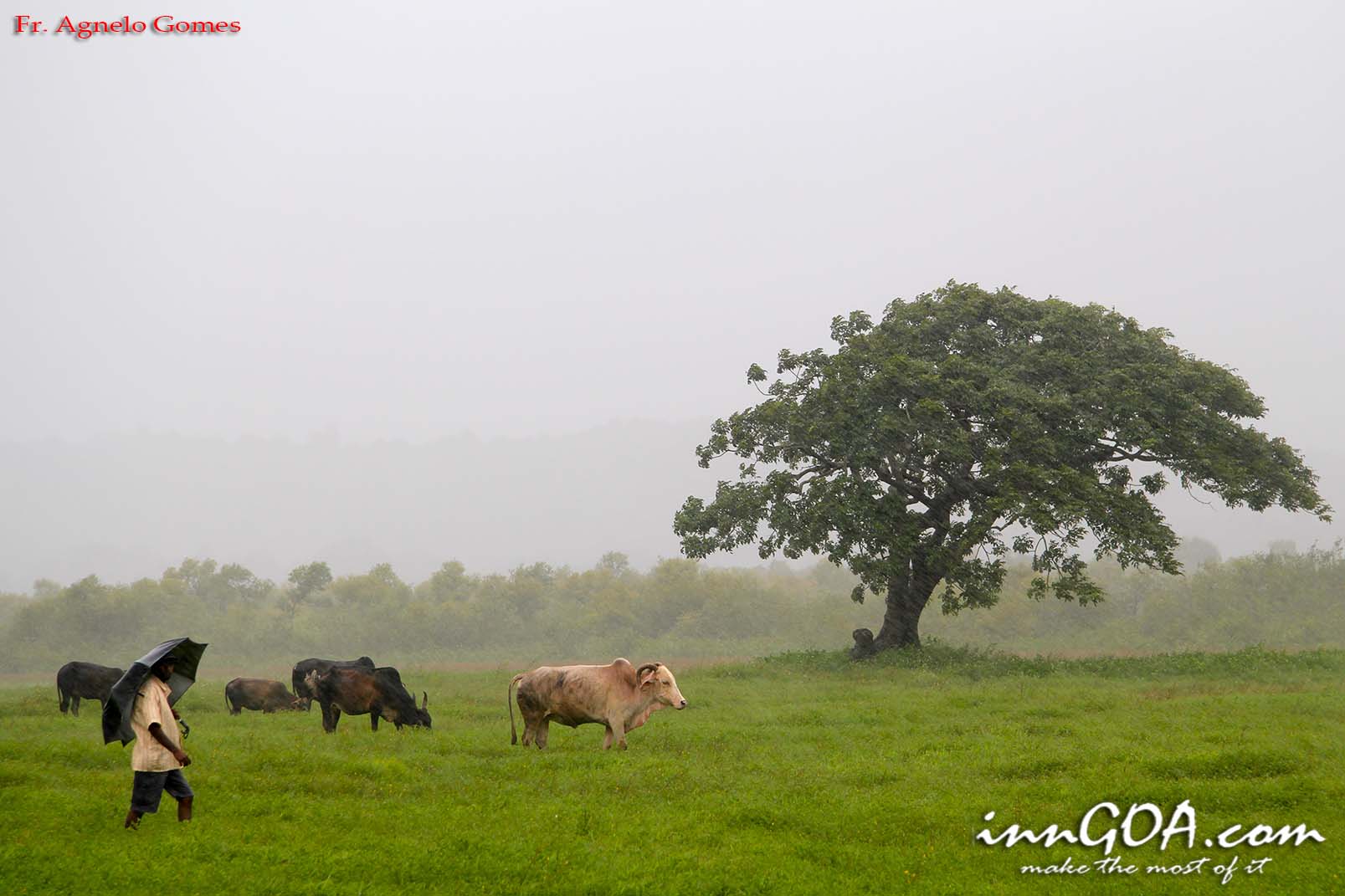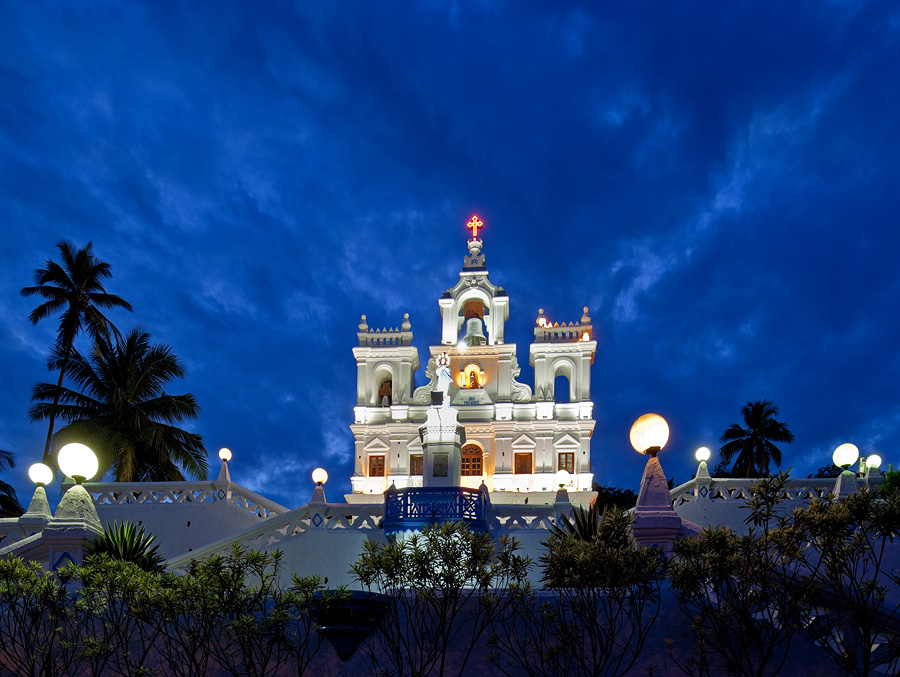St. Sebastian Church Of Aquem – Glimpses of the past
Aquem, a land of dreams and scenic beauty, is surrounded by majestic mountains and bathed by several springs. It has been the seat of power of conquerors like the Rajas and the Pandavas who sought after the land for its strategic location to establish their state residence. They built underground palaces and tunnels which were later occupied by Goancars and settlers until the kingdoms got gradually converted into Gaoncarias. In the prehistoric times Aquem was believed to be the capital of an extensive territory, possibly of Goa, which constituted a state dominated by a Raja descendent of the sons of Pandaw or Pandava who had five sons. This event is said to have occurred after the great war of Mahabharata which ended after 18 days and the two families spread all over India and Goa. The extensive territory that had Aquem as its capital consisted of Margao known as Margao (village of Weavers), Nuvem ( the old name being Mati,) Marsgao (village of demons), Margao (the central village), Dramapur (the city of Dormo the first son of Pandaw/Dhormapur known as city of devotion ), Sirlim (Sir Ali – a great war Lord), Telaulim (Tal-vali, a low level village), Dicarpale (Dicaro – a plant and pale – a village), Davorlim (the border of the village of Odli – Orlim) and Navelim. The village of Navelim was later ceded to the Dessai’s of Margao after the split by the last descendant Embicho Naique. Hence there was no mention of communidade of Navelim, although we have communidade of Aquem and communidade of Margao.
The birth of the chapel of St. Sebastian is based on sources such as oral and written transmission from generations of families, newspapers such as “A India Portuguesa”, “A Vida” Govt. gazettes, historical archives and vestiges of monuments such as grottoes and tunnels. St. Sebastian was the saint that the people turned to when burdened with epidemics of pests and plagues, which occurred frequently in Goa at the time, especially in Salcette areas. Through his intercession and miraculous interventions, the recurrence of these pests and plagues were eliminated altogether. The chapel of St. Sebastian came into existence in its primitive stages in the year 1592 after missionaries converted it from a private hindu temple. This temple was known as “Pandavachem deul” owned by Tipu Suntu Naique Sar Dessai, a decendant of the Pandavas, who had converted to Christianity on the 29th of February 1560 along with a thousand other locals from Aquem. He took the name of Sebastiao Coelho and hence the date of the feast of the Patron Saint was fixed on this day. The Chapel was handed over to and maintained by the Comunidade of Aquem from 1562 onwards and later by the collection of funds from the local faithful. Although the feast Mass of the Patron saint may have been celebrated on 29th February every year from 1560 onwards, the Sunday Masses were more regularly celebrated from around 1900 onwards.
In 1925 Fr. Arduino Dias from Velsao was believed to have been the non-resident chaplain of the chapel. He was followed by Fr. Joao de Piedade Viegas from Carmona, who served as the resident Chaplain. It was during his tenure that the side altar dedicated to our lady of Rosary and St. Joseph came into being and it was inaugurated on the 12th of January, 1938. There may have been non resident chaplains of this chapel before 1925 but no clear records to this effect are available. Thereafter from 1940 to 1954 Fr. Elias Dias was the next resident chaplain who was followed by the other resident chaplains. The “Pandavachem deul” was 50 meters away from the grotto at the back of the Chapel which is the entrance leading to the underground caves and tunnels. These caves and tunnels were built by the Pandavas for defense from enemies like Shivaji and his warriors. Before the roads were tarred in 1956, a sort of spiral flow of water covering a diameter of 4 to 6 meters was clearly observed about twenty meters east of the chapel, signifying the presence of underground tunnels quite possibly extending upto Rachol and Chandor. According to the Historical Archives, the actual altar of St. Sebastian was 50 meters away from the grotto at the side of the “deul” in the capela mor of the present Chapel.
The chapel was enlarged in 1916. A big granite cross was erected on the top of the Chapel tower on the occasion of the conversion of the deul into the chapel. This cross was later hit by lightning and destroyed in 1958. The adjoining residence for the priest was built around 1938, and the school of Sta Terezinha for music and elementary studies came into existence around 1952. The “Confre de Capela” de Sto Sebastiao was installed in the year 1957. It is pertinent to note that the St. Sebastian Chapel of Aquem Alto was the oldest sanctuary, not only in Aquem but also in the old Salcette Parish from 1562 onwards with the exception of the fort of Rachol. Gradually areas of Borda, Gogol, Mestabhat, Margao city, Police Station up to river Sal were cut off from the Parish of Aquem and what remained were the areas of Aquem Alto and Aquem Baixo. From 1939 to 1940, as per the Govt. Gazette, the railway line was used as a dividing line between Margao and Navelim and with this division, the Aquem Parish suffered further dismemberment, since Aquem Baixo and a part of Fradilem became a part of Navelim. Later, a part of Aquem Alto, Tansazori and Malbhat was given to Margao. This Chapel was under the domain of the Navelim Church, which was actually founded in 1597 and dedicated to St. John the Baptist. It was later burnt down and another Church was built dedicated to Our Lady of Rosary at the present site in Navelim. This was burnt down again and finally the present Church of Navelim was constructed in 1604. Hence, the presently erected St. Sebastian Church at Aquem Alto has a rich, glorious past. It began as a chapel consecrated to the Patron st Sebastian in the year 1562. It has existed for more than half a millennium and continues to exist in all its glory.
Mass – Timings
Weekly : 6.45 a.m. (on Wednesdays at 5:30 pm)
Every Wednesday : 5:30 PM
Every Friday : 6:00 pm. followed by Adoration (6:30 p.m.– 7:30 p.m.)
Saturday : 6.45 a.m. ,5.30 p.m. (Sunday Mass)
Sunday : 6.15 a.m. ,7.30 a.m. ,8.45a.m.(Children’s Mass)
Holy Communion for the sick & old : Every First Friday Morning
Office Timings
Monday to Friday : 9.00a.m. to 01.00 p.m and 3.30p.m. to 5.30p.m.
Saturday : 9.00a.m. to 01.00p.m.




